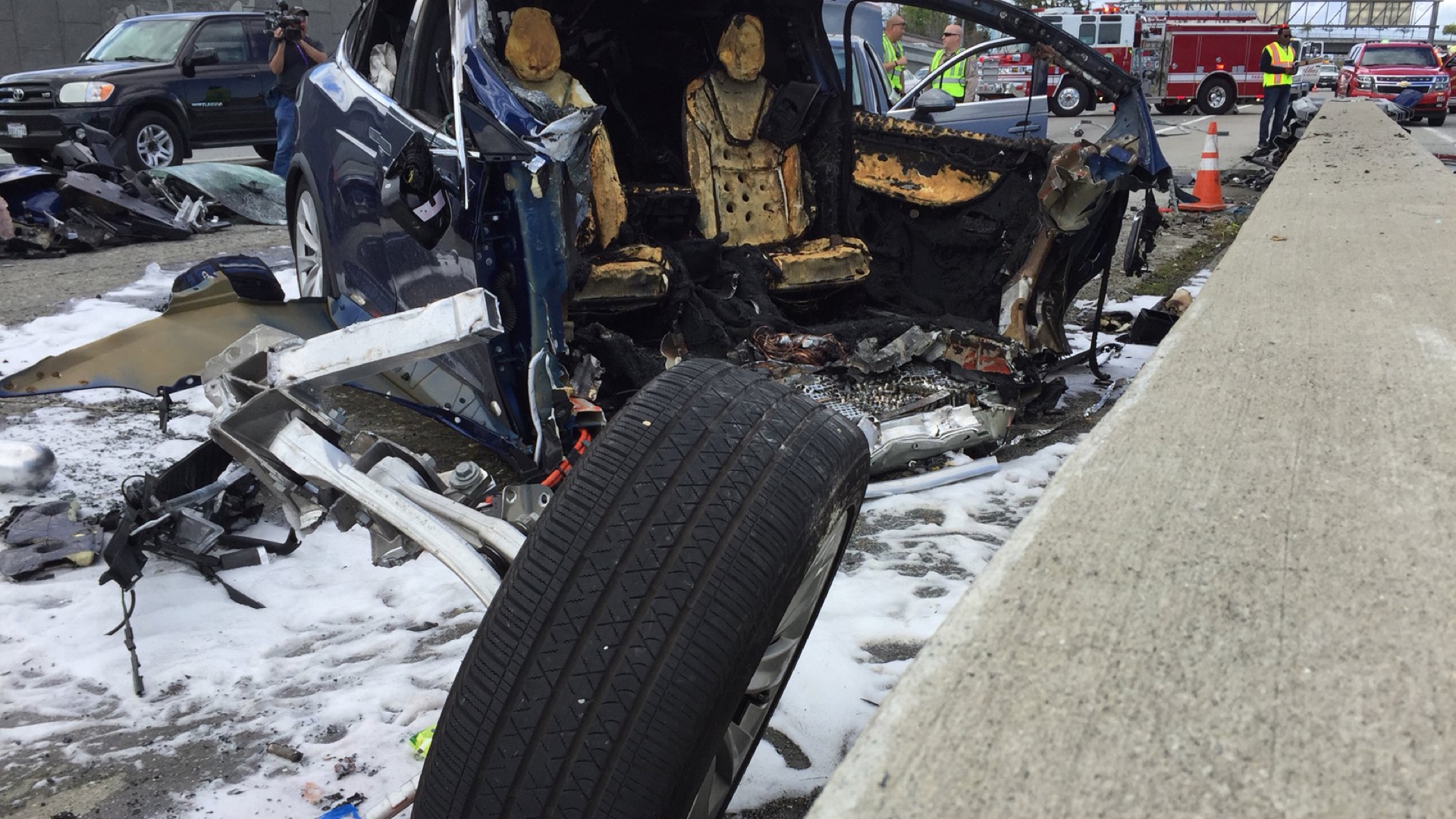

Last week, a Tesla Model X driver was killed when their vehicle impacted a concrete highway divider, whose crash attenuator was out of order from a prior incident. The crash occurred with sufficient force to burst the vehicle’s lithium-ion batteries, which, once free of their casings, conflagrated. Eager to rip Tesla, many leapt on the Autopilot blame bandwagon, to which Tesla responded by opening an investigation into the accident, with a scan of the smashed Model X’s black box.
Tesla released its findings on Friday, and confirmed that the crashed car was indeed operating in Autopilot mode at the time of the accident. The Model X’s operator had toggled the mode on, opting for the minimum following distance to the vehicle ahead of them allowed by the system, and then removed their hands, against Tesla’s instructions. The data snapshot reveals that the driver’s hands were absent from the wheel for at least six seconds before the impact.
Furthermore, the company claims that the driver had a five second unobstructed view of the divider which their vehicle would impact, from up to 150 meters (almost 500 feet) away.
One factor was assuredly not a hazard for which the Model X driver could be held accountable: The impact buffer on the end of the divider into which they crashed was damaged by a prior impact, and no longer provided adequate cushioning for collisions.
Autopilot has been blamed for a multitude of accidents throughout Tesla’s history, some even fatal. Following the recent coming-together of an autonomous Uber vehicle and a jaywalker in Arizona, which resulted in the bicyclist’s death, the tone of the conversation surrounding autonomous driving is turning back toward skepticism. We are starting to realize that automated driver aids are only as handy as the person behind the wheel, and that no matter how advanced our technology, we need to keep our wits about us on the road.